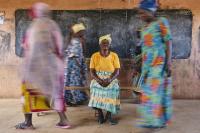 Lee-Ann Olwage, who admits she struggles with her own mental health issues, also has family members who have suffered or are suffering from Alzheimer's. For this reason, she states that, with her work, she aims to create a space in which the people she photographs can play an active role in creating the images and that, above all, makes them feel like the true “heroines” of their own stories.
Lee-Ann Olwage, who admits she struggles with her own mental health issues, also has family members who have suffered or are suffering from Alzheimer's. For this reason, she states that, with her work, she aims to create a space in which the people she photographs can play an active role in creating the images and that, above all, makes them feel like the true “heroines” of their own stories.
Face to face
13.12.2023 | by Mariana Moniz
 At its heart, MIXED is an exploration of racial and cultural identity. MIXED deals specifically with people that have mixed heritage, delving into the experiences of each subject that also echo his own. The series addresses the existential feeling of not fully belonging, while examining the cost of assimilation within society. The conversations focus especially on the contradiction of fitting in everywhere but nowhere at the same time and the resulting shoot is a collaboration that encompasses the themes considered.
At its heart, MIXED is an exploration of racial and cultural identity. MIXED deals specifically with people that have mixed heritage, delving into the experiences of each subject that also echo his own. The series addresses the existential feeling of not fully belonging, while examining the cost of assimilation within society. The conversations focus especially on the contradiction of fitting in everywhere but nowhere at the same time and the resulting shoot is a collaboration that encompasses the themes considered.
Stages
02.11.2022 | by Theo Gould
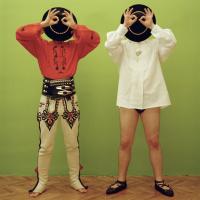 The exhibition, which aims to give voice to a young generation of photographers in Poland, also includes the work of Irena Kalicka, a young artist who is critical of her country’s tendency to turn to the extreme right. I had the opportunity to present a photograph of her in the magazine “Fantasia Macau” last year.
The exhibition, which aims to give voice to a young generation of photographers in Poland, also includes the work of Irena Kalicka, a young artist who is critical of her country’s tendency to turn to the extreme right. I had the opportunity to present a photograph of her in the magazine “Fantasia Macau” last year.
To read
21.10.2022 | by Cheong Kin Man
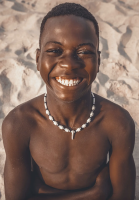 Angola is a nation still recovering from years of war and internal conflict, but photographer Kim Praise has his heart set on capturing the nation’s beauty, and the ways in which it’s evolving for the better. He tells writer Ify Obi about his favorite things about his home, and why he’s determined to paint the country—and its people—in a new light.
Angola is a nation still recovering from years of war and internal conflict, but photographer Kim Praise has his heart set on capturing the nation’s beauty, and the ways in which it’s evolving for the better. He tells writer Ify Obi about his favorite things about his home, and why he’s determined to paint the country—and its people—in a new light.
To read
12.10.2022 | by Ify Obi
 My work has always been focused round connection. I’ve always wanted to tell stories that even though you know the audience and the subject might be different I would want the audience to look at the photo, the subjects, and each detail and for them to be able to see something similar.
Most people that look at my most recent project “MIXED” and probably don’t necessarily think of themselves as mixed, however if we really look back at history and ethnicity it’s clear that we are all mixed, we just haven’t identified it . We all came from Africa and our genetic disposition is remarkably similar. The only differences we notice are as a result of our ancestors colonising different parts of our planet. Effectively we’re all mixed as racial purity is a complete myth.
My work has always been focused round connection. I’ve always wanted to tell stories that even though you know the audience and the subject might be different I would want the audience to look at the photo, the subjects, and each detail and for them to be able to see something similar.
Most people that look at my most recent project “MIXED” and probably don’t necessarily think of themselves as mixed, however if we really look back at history and ethnicity it’s clear that we are all mixed, we just haven’t identified it . We all came from Africa and our genetic disposition is remarkably similar. The only differences we notice are as a result of our ancestors colonising different parts of our planet. Effectively we’re all mixed as racial purity is a complete myth.
Face to face
28.02.2022 | by Alícia Gaspar
 During their years at war, thousands of the young recruits sent to Angola, Guinea-Bissau and Mozambique took photos of what surrounded them: their comrades, barracks, landscapes, daily life, the civilian population, and the military apparatus. These images managed to evade the censorship of the regime, and were stored away or sent by mail as proof of their distant lives.
Some of these men built improvised darkrooms, others managed to access official ones. Many visited photography shops that flourished as a consequence of the demand generated by the war, and many bought and exchanged images. All this created the photographic archives of which we here present a part.
During their years at war, thousands of the young recruits sent to Angola, Guinea-Bissau and Mozambique took photos of what surrounded them: their comrades, barracks, landscapes, daily life, the civilian population, and the military apparatus. These images managed to evade the censorship of the regime, and were stored away or sent by mail as proof of their distant lives.
Some of these men built improvised darkrooms, others managed to access official ones. Many visited photography shops that flourished as a consequence of the demand generated by the war, and many bought and exchanged images. All this created the photographic archives of which we here present a part.
I'll visit
05.01.2022 | by Inês Ponte and Maria José Lobo Antunes
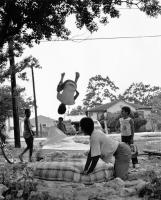 Hudnall records for posterity the architecture of weathered shotgun houses and the vibrant lives within them. He depicts people at ease, celebrating holidays, dressed in their Sunday finery, and kids in the thrall of summertime. “These are the young Floyds coming up,” he says. “They need to be cared for and guided. Rather than holding up a sign and marching for a day or two, then forgetting about it, come here, talk to people, get to know them.”
Hudnall records for posterity the architecture of weathered shotgun houses and the vibrant lives within them. He depicts people at ease, celebrating holidays, dressed in their Sunday finery, and kids in the thrall of summertime. “These are the young Floyds coming up,” he says. “They need to be cared for and guided. Rather than holding up a sign and marching for a day or two, then forgetting about it, come here, talk to people, get to know them.”
Games Without Borders
14.12.2020 | by Earlie Hudnall and Paul Moakley
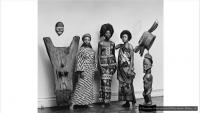 How a photographer, a group of models and a fashion show in Harlem kick-started a cultural and political movement that still inspires today. On 28 January 1962, a large crowd formed outside Purple Manor, a nightclub in the Harlem neighbourhood of New York City. A fashion show was taking place – an event that proved so popular it had to be held for a second time that same night – which sparked a movement that would change the way black people were represented forever. The show, titled Naturally ’62, was organised by the African Jazz-Art Society & Studios (AJASS), a group of creatives, including photographer Kwame Brathwaite.
How a photographer, a group of models and a fashion show in Harlem kick-started a cultural and political movement that still inspires today. On 28 January 1962, a large crowd formed outside Purple Manor, a nightclub in the Harlem neighbourhood of New York City. A fashion show was taking place – an event that proved so popular it had to be held for a second time that same night – which sparked a movement that would change the way black people were represented forever. The show, titled Naturally ’62, was organised by the African Jazz-Art Society & Studios (AJASS), a group of creatives, including photographer Kwame Brathwaite.
To read
28.10.2020 | by Precious Adesina
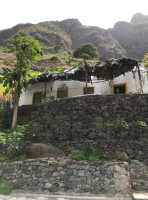 The present photo-essay is the result of recent fieldwork. On the islands, the inhabitants had to harness available resources (e.g., rain, soil, mountains and oceans) and follow a frugal but ingenious diet. Collectively, they triumphed over natural forces, western colonialism and deterministic forecasts.
The present photo-essay is the result of recent fieldwork. On the islands, the inhabitants had to harness available resources (e.g., rain, soil, mountains and oceans) and follow a frugal but ingenious diet. Collectively, they triumphed over natural forces, western colonialism and deterministic forecasts.
To read
13.09.2020 | by Kaian Lam
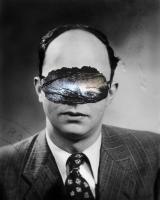 The work suggests that another person’s perspective, and their particular capacities, affects the inherited vision. This vision, diminished or amplified, can cloud, obscure, or deform the receiving view; but it may at the same time provoke the heir to explore the ways that their perspective belongs neither only to them, nor any longer only to the bequeather. And this question, which starts with recognising this inheritance, can also be the starting point for other visions.
The work suggests that another person’s perspective, and their particular capacities, affects the inherited vision. This vision, diminished or amplified, can cloud, obscure, or deform the receiving view; but it may at the same time provoke the heir to explore the ways that their perspective belongs neither only to them, nor any longer only to the bequeather. And this question, which starts with recognising this inheritance, can also be the starting point for other visions.
To read
23.03.2019 | by Fátima da Cruz Rodrigues
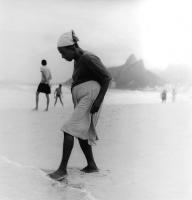 BRASIL is a photobook project that is the result of eight years of photographing culture, landscape, architecture and the visual magic I found in Rio de Janeiro, Sao Paulo and Salvador de Bahia. Made on analog film, the photographs are personal portraits that illuminate a fluid, syncopated, and complex contemporary Brazil, seen through the lens of my Rolleiflex camera.
BRASIL is a photobook project that is the result of eight years of photographing culture, landscape, architecture and the visual magic I found in Rio de Janeiro, Sao Paulo and Salvador de Bahia. Made on analog film, the photographs are personal portraits that illuminate a fluid, syncopated, and complex contemporary Brazil, seen through the lens of my Rolleiflex camera.
I'll visit
30.09.2015 | by Kristin Capp
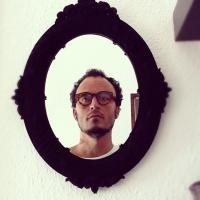 And he answers that the production company that he is part of, Generation 80, was born under a very good star: “there is a crisis in the world, money is for some people ever more difficult to get, but technology is also more at hand for everybody. There are advantages in these days of bureaucracies and problems getting a foot in the door – you don’t need an investment of millions to work in this field and to make a film with a camcorder.”
And he answers that the production company that he is part of, Generation 80, was born under a very good star: “there is a crisis in the world, money is for some people ever more difficult to get, but technology is also more at hand for everybody. There are advantages in these days of bureaucracies and problems getting a foot in the door – you don’t need an investment of millions to work in this field and to make a film with a camcorder.”
Face to face
23.07.2012 | by Marta Lança
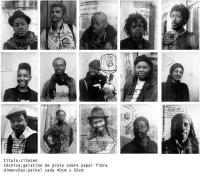 Délio Jasse work can be interpreted under the somewhat complex view of the post colonial speeches, in the sense that his images emanate a quality of alterity, which gives them identity. However this simplification can be limiting if it becomes dissonant with the artistic speech where his images belong, obviously.
Délio Jasse work can be interpreted under the somewhat complex view of the post colonial speeches, in the sense that his images emanate a quality of alterity, which gives them identity. However this simplification can be limiting if it becomes dissonant with the artistic speech where his images belong, obviously.
Face to face
08.07.2010 | by Hugo Dinis
 José Cabral came to this collective history in a unique way, having trained with his father amateur photographer and filmmaker — he also had a homonymous grandfather, on his father’s side, who was a governor (1910-1938) and who had a park named after him in the old capital Lourenço Marques (Continuadores Park, today). He started in cinematography and he joined his experience as a news photographer to documental programmes of a less urgent nature. Later, he was probably the first to distance himself from the routines of journalism, and he made that challenge very clear with the choice of works in display in the Iluminando Vidas exhibit: instead of war, misery, victims, ruins and promises of reconstruction, that can still be seen yet another face for exoticism, he showed feminine nudes without any ethnographical pretext.
José Cabral came to this collective history in a unique way, having trained with his father amateur photographer and filmmaker — he also had a homonymous grandfather, on his father’s side, who was a governor (1910-1938) and who had a park named after him in the old capital Lourenço Marques (Continuadores Park, today). He started in cinematography and he joined his experience as a news photographer to documental programmes of a less urgent nature. Later, he was probably the first to distance himself from the routines of journalism, and he made that challenge very clear with the choice of works in display in the Iluminando Vidas exhibit: instead of war, misery, victims, ruins and promises of reconstruction, that can still be seen yet another face for exoticism, he showed feminine nudes without any ethnographical pretext.
Face to face
28.05.2010 | by Alexandre Pomar
 Lee-Ann Olwage, who admits she struggles with her own mental health issues, also has family members who have suffered or are suffering from Alzheimer's. For this reason, she states that, with her work, she aims to create a space in which the people she photographs can play an active role in creating the images and that, above all, makes them feel like the true “heroines” of their own stories.
Lee-Ann Olwage, who admits she struggles with her own mental health issues, also has family members who have suffered or are suffering from Alzheimer's. For this reason, she states that, with her work, she aims to create a space in which the people she photographs can play an active role in creating the images and that, above all, makes them feel like the true “heroines” of their own stories.  At its heart, MIXED is an exploration of racial and cultural identity. MIXED deals specifically with people that have mixed heritage, delving into the experiences of each subject that also echo his own. The series addresses the existential feeling of not fully belonging, while examining the cost of assimilation within society. The conversations focus especially on the contradiction of fitting in everywhere but nowhere at the same time and the resulting shoot is a collaboration that encompasses the themes considered.
At its heart, MIXED is an exploration of racial and cultural identity. MIXED deals specifically with people that have mixed heritage, delving into the experiences of each subject that also echo his own. The series addresses the existential feeling of not fully belonging, while examining the cost of assimilation within society. The conversations focus especially on the contradiction of fitting in everywhere but nowhere at the same time and the resulting shoot is a collaboration that encompasses the themes considered.  The exhibition, which aims to give voice to a young generation of photographers in Poland, also includes the work of Irena Kalicka, a young artist who is critical of her country’s tendency to turn to the extreme right. I had the opportunity to present a photograph of her in the magazine “Fantasia Macau” last year.
The exhibition, which aims to give voice to a young generation of photographers in Poland, also includes the work of Irena Kalicka, a young artist who is critical of her country’s tendency to turn to the extreme right. I had the opportunity to present a photograph of her in the magazine “Fantasia Macau” last year.  Angola is a nation still recovering from years of war and internal conflict, but photographer Kim Praise has his heart set on capturing the nation’s beauty, and the ways in which it’s evolving for the better. He tells writer Ify Obi about his favorite things about his home, and why he’s determined to paint the country—and its people—in a new light.
Angola is a nation still recovering from years of war and internal conflict, but photographer Kim Praise has his heart set on capturing the nation’s beauty, and the ways in which it’s evolving for the better. He tells writer Ify Obi about his favorite things about his home, and why he’s determined to paint the country—and its people—in a new light.  My work has always been focused round connection. I’ve always wanted to tell stories that even though you know the audience and the subject might be different I would want the audience to look at the photo, the subjects, and each detail and for them to be able to see something similar.
Most people that look at my most recent project “MIXED” and probably don’t necessarily think of themselves as mixed, however if we really look back at history and ethnicity it’s clear that we are all mixed, we just haven’t identified it . We all came from Africa and our genetic disposition is remarkably similar. The only differences we notice are as a result of our ancestors colonising different parts of our planet. Effectively we’re all mixed as racial purity is a complete myth.
My work has always been focused round connection. I’ve always wanted to tell stories that even though you know the audience and the subject might be different I would want the audience to look at the photo, the subjects, and each detail and for them to be able to see something similar.
Most people that look at my most recent project “MIXED” and probably don’t necessarily think of themselves as mixed, however if we really look back at history and ethnicity it’s clear that we are all mixed, we just haven’t identified it . We all came from Africa and our genetic disposition is remarkably similar. The only differences we notice are as a result of our ancestors colonising different parts of our planet. Effectively we’re all mixed as racial purity is a complete myth.  During their years at war, thousands of the young recruits sent to Angola, Guinea-Bissau and Mozambique took photos of what surrounded them: their comrades, barracks, landscapes, daily life, the civilian population, and the military apparatus. These images managed to evade the censorship of the regime, and were stored away or sent by mail as proof of their distant lives.
Some of these men built improvised darkrooms, others managed to access official ones. Many visited photography shops that flourished as a consequence of the demand generated by the war, and many bought and exchanged images. All this created the photographic archives of which we here present a part.
During their years at war, thousands of the young recruits sent to Angola, Guinea-Bissau and Mozambique took photos of what surrounded them: their comrades, barracks, landscapes, daily life, the civilian population, and the military apparatus. These images managed to evade the censorship of the regime, and were stored away or sent by mail as proof of their distant lives.
Some of these men built improvised darkrooms, others managed to access official ones. Many visited photography shops that flourished as a consequence of the demand generated by the war, and many bought and exchanged images. All this created the photographic archives of which we here present a part.  Hudnall records for posterity the architecture of weathered shotgun houses and the vibrant lives within them. He depicts people at ease, celebrating holidays, dressed in their Sunday finery, and kids in the thrall of summertime. “These are the young Floyds coming up,” he says. “They need to be cared for and guided. Rather than holding up a sign and marching for a day or two, then forgetting about it, come here, talk to people, get to know them.”
Hudnall records for posterity the architecture of weathered shotgun houses and the vibrant lives within them. He depicts people at ease, celebrating holidays, dressed in their Sunday finery, and kids in the thrall of summertime. “These are the young Floyds coming up,” he says. “They need to be cared for and guided. Rather than holding up a sign and marching for a day or two, then forgetting about it, come here, talk to people, get to know them.”  How a photographer, a group of models and a fashion show in Harlem kick-started a cultural and political movement that still inspires today. On 28 January 1962, a large crowd formed outside Purple Manor, a nightclub in the Harlem neighbourhood of New York City. A fashion show was taking place – an event that proved so popular it had to be held for a second time that same night – which sparked a movement that would change the way black people were represented forever. The show, titled Naturally ’62, was organised by the African Jazz-Art Society & Studios (AJASS), a group of creatives, including photographer Kwame Brathwaite.
How a photographer, a group of models and a fashion show in Harlem kick-started a cultural and political movement that still inspires today. On 28 January 1962, a large crowd formed outside Purple Manor, a nightclub in the Harlem neighbourhood of New York City. A fashion show was taking place – an event that proved so popular it had to be held for a second time that same night – which sparked a movement that would change the way black people were represented forever. The show, titled Naturally ’62, was organised by the African Jazz-Art Society & Studios (AJASS), a group of creatives, including photographer Kwame Brathwaite.  The present photo-essay is the result of recent fieldwork. On the islands, the inhabitants had to harness available resources (e.g., rain, soil, mountains and oceans) and follow a frugal but ingenious diet. Collectively, they triumphed over natural forces, western colonialism and deterministic forecasts.
The present photo-essay is the result of recent fieldwork. On the islands, the inhabitants had to harness available resources (e.g., rain, soil, mountains and oceans) and follow a frugal but ingenious diet. Collectively, they triumphed over natural forces, western colonialism and deterministic forecasts.  The work suggests that another person’s perspective, and their particular capacities, affects the inherited vision. This vision, diminished or amplified, can cloud, obscure, or deform the receiving view; but it may at the same time provoke the heir to explore the ways that their perspective belongs neither only to them, nor any longer only to the bequeather. And this question, which starts with recognising this inheritance, can also be the starting point for other visions.
The work suggests that another person’s perspective, and their particular capacities, affects the inherited vision. This vision, diminished or amplified, can cloud, obscure, or deform the receiving view; but it may at the same time provoke the heir to explore the ways that their perspective belongs neither only to them, nor any longer only to the bequeather. And this question, which starts with recognising this inheritance, can also be the starting point for other visions.  BRASIL is a photobook project that is the result of eight years of photographing culture, landscape, architecture and the visual magic I found in Rio de Janeiro, Sao Paulo and Salvador de Bahia. Made on analog film, the photographs are personal portraits that illuminate a fluid, syncopated, and complex contemporary Brazil, seen through the lens of my Rolleiflex camera.
BRASIL is a photobook project that is the result of eight years of photographing culture, landscape, architecture and the visual magic I found in Rio de Janeiro, Sao Paulo and Salvador de Bahia. Made on analog film, the photographs are personal portraits that illuminate a fluid, syncopated, and complex contemporary Brazil, seen through the lens of my Rolleiflex camera.  And he answers that the production company that he is part of, Generation 80, was born under a very good star: “there is a crisis in the world, money is for some people ever more difficult to get, but technology is also more at hand for everybody. There are advantages in these days of bureaucracies and problems getting a foot in the door – you don’t need an investment of millions to work in this field and to make a film with a camcorder.”
And he answers that the production company that he is part of, Generation 80, was born under a very good star: “there is a crisis in the world, money is for some people ever more difficult to get, but technology is also more at hand for everybody. There are advantages in these days of bureaucracies and problems getting a foot in the door – you don’t need an investment of millions to work in this field and to make a film with a camcorder.”  Délio Jasse work can be interpreted under the somewhat complex view of the post colonial speeches, in the sense that his images emanate a quality of alterity, which gives them identity. However this simplification can be limiting if it becomes dissonant with the artistic speech where his images belong, obviously.
Délio Jasse work can be interpreted under the somewhat complex view of the post colonial speeches, in the sense that his images emanate a quality of alterity, which gives them identity. However this simplification can be limiting if it becomes dissonant with the artistic speech where his images belong, obviously.  José Cabral came to this collective history in a unique way, having trained with his father amateur photographer and filmmaker — he also had a homonymous grandfather, on his father’s side, who was a governor (1910-1938) and who had a park named after him in the old capital Lourenço Marques (Continuadores Park, today). He started in cinematography and he joined his experience as a news photographer to documental programmes of a less urgent nature. Later, he was probably the first to distance himself from the routines of journalism, and he made that challenge very clear with the choice of works in display in the Iluminando Vidas exhibit: instead of war, misery, victims, ruins and promises of reconstruction, that can still be seen yet another face for exoticism, he showed feminine nudes without any ethnographical pretext.
José Cabral came to this collective history in a unique way, having trained with his father amateur photographer and filmmaker — he also had a homonymous grandfather, on his father’s side, who was a governor (1910-1938) and who had a park named after him in the old capital Lourenço Marques (Continuadores Park, today). He started in cinematography and he joined his experience as a news photographer to documental programmes of a less urgent nature. Later, he was probably the first to distance himself from the routines of journalism, and he made that challenge very clear with the choice of works in display in the Iluminando Vidas exhibit: instead of war, misery, victims, ruins and promises of reconstruction, that can still be seen yet another face for exoticism, he showed feminine nudes without any ethnographical pretext. 